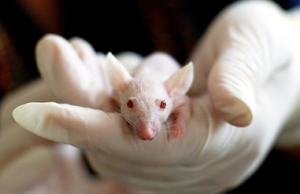The glaucoma is a major cause of visual impairment and irreversible blindness. Globally, over 60 million people suffer from it and this number could rise to over 111 million by 2040.
Glaucoma is a disease neurodegenerative and multifactorialcharacterised by optic nerve damage and apoptosis of retinal ganglion cells (RGCs). The most common form is primary open-angle glaucoma (POAG) and the main risk factor is elevated intraocular pressure (IOP). Several studies indicate that the pathogenesis of glaucoma is influenced by the macroglia response and that the activation of microglia and complement play a key role in the onset of this pathology. However, ghe exact molecular mechanisms underlying glaucomatous neurodegeneration are not yet fully understood.
Researchers from the University of Bochum (Germany), in collaboration with the University of Toronto (Canada) and the University of Denver (Colorado), recently published a study on the Role of PTP-Meg2 (megakaryocyte protein tyrosine phosphatase-2) in glaucomatous neurodegeneration. The scholars' focus on this protein stems from the notoriously crucial role that the members of the protein tyrosine phosphatase (PTP) superfamily play in numerous degenerative diseases and the as yet incomplete data on the expression patterns and potential functional roles they play in the retina.
The German study, recently published in Molecular Neurobiology, investigates the potential functional relevance of Meg2 in retinal neurodegeneration by analysing knockout (KO) and heterozygous (HET) mice for Meg2. The team of researchers, using a microarray and quantitative real-time PCR (RT-qPCR) approach, showed in HET-Meg2 mice a dysregulation of several genes highly associated with retinal degeneration and a progressive increase in age-dependent IOP. Ultrastructural and immunohistochemical analyses also showed a severe optic nerve degeneration accompanied by a dramatic loss of RGCs. The HET-Meg 2 mice showed, again, reactive micro- and macrogliosis and early activation of the complement cascade with a pronounced membrane attachment complex (MAC) deposition in the retina and optic nerve. Following treatment with anti-glaucomatous drugs, the HET-Meg 2 mice showed a significant decrease in IOP that prevented RGC loss and microglia invasion. The authors, finally, by means of electroretinogram (ERG) recordings showed a reduced amplitude of a- and b-waves, indicating impaired retinal function.
The research also shows that loss of Meg2 in heterozygous mice is sufficient to cause increased IOP and glaucomatous neurodegeneration.
The authors conclude by suggesting the use of HET-Meg2 mice as an in vivo model of neurodegeneration to explore the molecular mechanism underlying glaucoma. Furthermore, Meg2-deficient mice could be a promising tool for the development of new therapies, for screening neuroprotective drugs and for the identification of potential biomarkers.
Source
-Heterozygous Meg2 Ablation Causes Intraocular Pressure Elevation and Progressive Glaucomatous Neurodegeneration. Jacqueline Reinhard et al. Molecular Neurobiology, Oct 2018.
Dr. Carmelo Chines
Direttore responsabile

